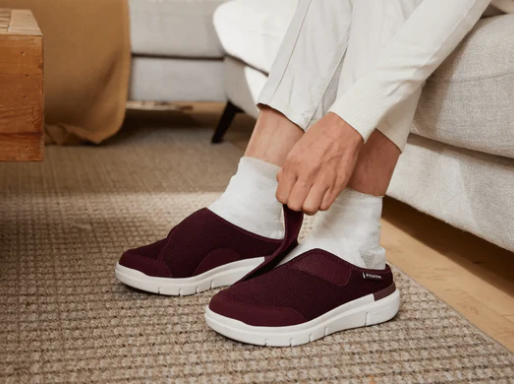For women living with diabetes, foot health is a year-round priority—but summer weather can make traditional shoes feel hot, restrictive, and uncomfortable. Enter: diabetic women’s sandals—specially designed to offer breathability, comfort, and protection without compromising on style.
Whether you’re heading out for errands, a walk on the beach, or relaxing at home, the right pair of sandals can keep your feet cool and supported while helping prevent pressure points, friction, and foot injuries.
Why Diabetic Women Need Special Sandals
Diabetes can cause neuropathy (nerve damage) and poor circulation, increasing the risk of:
-
Blisters or cuts that go unnoticed
-
Foot ulcers and infections
-
Pressure-related injuries from shoes that don’t fit properly
Diabetic sandals are designed with these issues in mind. They prioritize comfort, foot stability, and protective features to reduce risks and promote healthy movement—especially important for women who are on their feet a lot or dealing with bunions, swelling, or sensitive skin.
Key Features of Diabetic Women’s Sandals
Not all sandals are foot-friendly—especially if you’re managing diabetes. When shopping, look for the following features:
1. Wide Toe Box
A roomy toe area allows your toes to spread naturally without crowding or rubbing, which is essential for reducing pressure and irritation.
2. Adjustable Straps
Velcro or buckle closures help you achieve a customized fit, especially if you deal with foot swelling throughout the day. Adjustable straps prevent tight spots and ensure gentle support.
3. Padded Insoles with Arch Support
Supportive cushioning helps absorb impact and reduce strain on pressure points. Look for sandals with memory foam, OrthoLite®, or EVA footbeds—ideally with ergonomic arch support for added comfort.
4. Soft, Seam-Free Linings
Seamless interiors reduce the risk of chafing, blisters, and ulcers, which are common hazards in standard open-toed footwear.
5. Slip-Resistant Outsoles
A sandal with good grip helps prevent slips and falls—especially important if you experience numbness or balance issues from neuropathy.
6. Closed or Protected Toe Options (Optional)
While not necessary for all women, some prefer sandals with closed-toe designs for additional protection from accidental bumps or debris.
Benefits of Diabetic-Friendly Sandals for Women
-
All-day comfort for errands, travel, or relaxing at home
-
Reduced friction and pressure, helping to prevent wounds
-
Customizable fit for swelling or high insteps
-
Cool, breathable feel in warmer months
-
Stylish options that don’t look like medical footwear
Best Uses for Diabetic Sandals
Diabetic sandals are great for:
-
Casual walking or light outdoor activity
-
Indoor or around-the-house wear
-
Travel or beach vacations
-
Women with foot issues like bunions, arthritis, or hammertoes
-
Post-surgery recovery (with your doctor’s approval)
Top Pick: FitVille Women’s EasyTop Recovery Sandal V3
If you’re looking for a sandal that combines comfort, support, and diabetic-friendly design, this is a standout option.
Key Features:
-
Wide toe box for comfort and foot deformities like bunions and hammertoes
-
Adjustable Velcro straps for a customized fit (great for swollen or sensitive feet)
-
Enhanced arch support and cushioned footbed
-
Slip-resistant rubber sole for safe walking indoors or out
-
Diabetic-friendly materials: breathable mesh, soft PU, and sponge upper
-
Weight: approx. 215g (per shoe) — extremely lightweight
Ideal For:
-
Diabetic women seeking comfort and protection in hot weather
-
Anyone needing a roomy, orthopedic sandal with support
-
Post-surgery or recovery footwear
Available in colors like burgundy, khaki, and black, they combine function with a clean, casual style.
Shopping Tips: How to Find the Right Pair
-
Try sandals on later in the day, when your feet may be more swollen
-
Wear your everyday socks or go barefoot, depending on how you’ll use them
-
Check for pressure points or rubbing, especially near straps and the heel
-
Avoid flip-flops or flat sandals with no support or cushioning
-
Ask your podiatrist if you’re unsure about the right style or fit
Final Thoughts
Finding the perfect diabetic women’s sandals isn’t just about comfort—it’s about supporting your long-term foot health. With the right pair, you can enjoy warm-weather freedom, reduce foot pain, and walk with confidence all summer long.
Whether you’re recovering from a foot issue or just want to prevent one, diabetic sandals with wide toe boxes, supportive cushioning, and secure straps can make all the difference.
Your feet work hard every day—treat them to the comfort and care they deserve.



